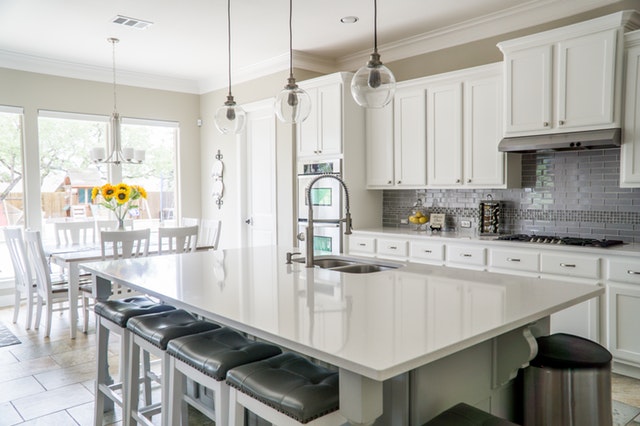 It takes a team effort to mitigate the negative impacts Mother Nature is currently experiencing. Each of us making little changes to our daily routine to reduce our carbon footprint can add up to make a significant difference for the environment. And what better place to begin living more eco-friendly than in our homes? If you want to benefit the planet and save money on energy and utilities, here are some practical tips for making your residence more green.
It takes a team effort to mitigate the negative impacts Mother Nature is currently experiencing. Each of us making little changes to our daily routine to reduce our carbon footprint can add up to make a significant difference for the environment. And what better place to begin living more eco-friendly than in our homes? If you want to benefit the planet and save money on energy and utilities, here are some practical tips for making your residence more green.
Start composting.
More and more people are deciding to compost at their homes, largely because the benefits for homeowners and the environment alike outweigh the effort and money it requires. Composting helps to minimize the effects that landfills have on climate change. When vegetables are thrown into a landfill, the plant matter decays and creates methane gas, which is far stronger than carbon dioxide.
Therefore, when you compost the remains of your eaten vegetables and use them for your garden or indoor plants, not only do you get a rich fertilizer, but you also reduce the number of greenhouse gases that you contribute to the environment. It’s a win-win!
Outdoor composters are great, but many homeowners find them too large or impractical for the space they have on their property. If this is your situation, consider getting an indoor composter. Before purchasing one, take into account its size, how easy it is to clean, and customer reviews.
Use less water.
Using less water is one of the most practical, holistic methods of preserving the planet. Start by fixing any leaks you may have in your home, whether it’s a faucet, pipe, or any other source. Other ways to conserve water include:
- Turning the tap off when you brush your teeth or shave.
- Installing a low-flow shower head.
- Using aerators on your faucets.
- Washing only full loads of laundry.
- Adding native plants that require less water to your landscaping.
Make sure your doors and windows are sealed.
Another way to save energy and money is to address any leaks you may have around your doors and windows. Do a walkthrough of your home and look for any entry doors and windows that have gaps. Then, replace the weatherstripping or use caulk to fill the gaps. This will help to keep heat or air from escaping your home, which can significantly reduce your energy bill. Also, check for any areas of the home that need new insulation, such as walls, the attic, and the roof.
Opt for energy-efficient appliances.
Energy-efficient appliances can go a long way in reducing your carbon footprint and saving you money. Not that you should immediately replace all of your appliances, but when it’s time to get a new washer, dryer, refrigerator, or other type of appliance, choose the one that is Energy Star certified. You also might receive incentives from your electricity company for adding efficient appliances.
Invest in a smart thermostat.
A smart thermostat is one of the best devices you can have in your residence. Most of them can be programmed to turn off when no one is home or raise/lower the temperature at any given time throughout the day. For instance, keeping your home cooler in winter and warmer in summer when your family is at work or school can cut your energy costs and minimize the stress on your HVAC system. Moreover, you can control a smart thermostat remotely from your smartphone, tablet, or computer.
It might seem like one person—or even one family—can’t make a difference when it comes to environmental impact. However, when more and more of us choose to make little changes to our everyday routines, our collective effort can contribute to a healthier planet for everyone. Consider implementing these tips in your home, and always be open to other ideas of how you can reduce your carbon footprint.

Rob Woods
Rob is a dad living in Philadelphia. He enjoys DIY projects almost as much as raising his two children. He is the co-creator of FixItDads.com, which offers tips for home improvement projects.






